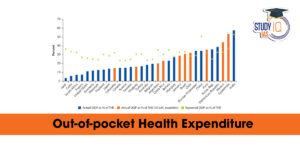Table of Contents
Context: India’s agricultural sector is heavily reliant on chemical fertilizers, particularly urea, di-ammonium phosphate (DAP), and muriate of potash (MOP).
Why India Needs to Cut DAP, Urea, and MOP Consumption?
Heavy Import Dependence
- MOP (Muriate of Potash): 100% imported from countries like Canada, Russia, and Jordan.
- DAP (Di-Ammonium Phosphate): Imported as finished fertiliser and raw materials from Saudi Arabia, China, Morocco, etc.
- Urea: While 85% is domestically produced, its manufacturing depends on imported Liquefied Natural Gas (LNG) from Qatar, the US, and the UAE.
- Rupee Depreciation Impact: Rising import costs put pressure on India’s forex reserves.
High-Analysis Fertilisers Lead to Imbalanced Nutrient Use
- Urea (46% Nitrogen), DAP (46% Phosphorus + 18% Nitrogen), and MOP (60% Potash) provide excessive single nutrients.
- This leads to soil degradation and reduces crop productivity over time.
- Crops require balanced fertilisation with secondary (Sulphur, Calcium, Magnesium) and micronutrients (Zinc, Iron, Boron, etc.).
Financial Burden of Fertiliser Subsidies
The government provides massive subsidies to keep prices affordable.
- DAP Subsidy: ₹21,911 per tonne + ₹3,500 special concession.
- Urea Subsidy: Even higher, making urea overused by farmers.
- Reducing consumption would cut the subsidy burden on the exchequer.
Strategies to Reduce Dependence
Indigenous Production
- Utilizing India’s natural resources, such as phosphate rock in Rajasthan, to boost domestic fertilizer production.
- Encouraging investments in urea, phosphatic, and complex fertilizer production under initiatives like ‘Atmanirbhar Bharat’.
Balanced Fertilization
Encouraging the use of complex fertilizers like 20:20:0:13 (ammonium phosphate sulphate) as alternatives to DAP.
| Examples of Alternatives |
|
Improve Nutrient Use Efficiency
- Use of Nano Urea: Reduces traditional urea application while increasing efficiency.
- Drip Irrigation + Fertigation: Reduces wastage and ensures precise nutrient delivery.
- Neem-Coated Urea: Slows nitrogen release, improving absorption.
- Farmer Awareness & Training: Train farmers on Integrated Nutrient Management (INM) for sustainable soil fertility.
- Promote agro-advisory services for real-time guidance on fertiliser application.
- Strengthen Krishi Vigyan Kendras (KVKs) to educate farmers on alternative fertilisers.


 Out-of-Pocket Health Expenditure, Reason...
Out-of-Pocket Health Expenditure, Reason...
 Treasury Bills (T-bills): RBI Cuts Holdi...
Treasury Bills (T-bills): RBI Cuts Holdi...
 Fisheries Sector in India, Current Statu...
Fisheries Sector in India, Current Statu...

























